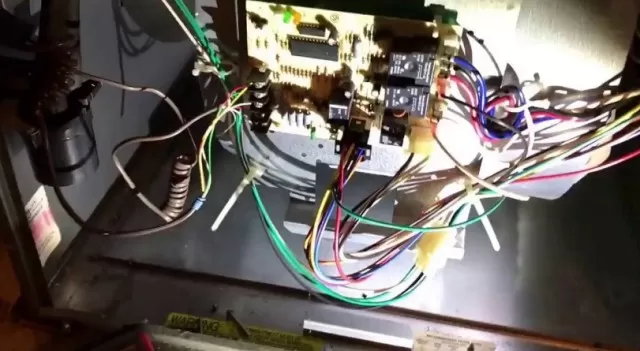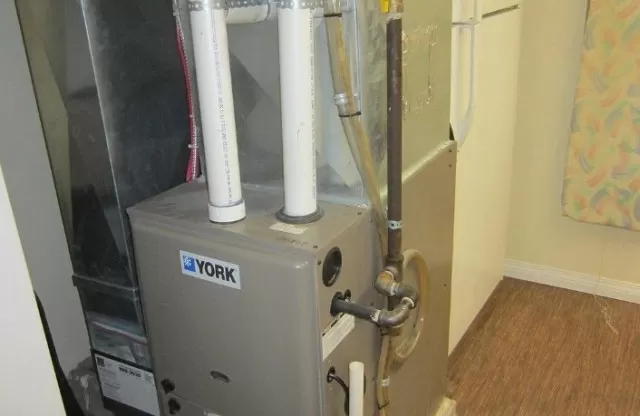Troubleshooting Guide: Fixing a Non-Responsive Furnace. If you’re experiencing issues with your furnace and it’s not functioning as expected, there are some troubleshooting steps you can take before reaching out to a professional technician. By identifying potential problem areas and knowing how to address them, you may be able to get your furnace up and running again.
It’s important to note that while these troubleshooting steps can resolve common furnace problems, some issues may require the expertise of a professional HVAC technician. If you’re unsure or uncomfortable performing any troubleshooting steps, or if the problem persists after trying these tips, it’s best to contact a licensed technician to diagnose and repair the furnace. They have the knowledge and tools to handle more complex furnace issues safely and effectively.
Don’t Forget to Activate the Thermostat: Troubleshooting Steps for Furnace Malfunction

When dealing with heating system problems, it’s common for people to overlook the most obvious solution—the thermostat.
The thermostat plays a crucial role in assessing the room’s temperature and allowing you to set and adjust the desired heat level. Typically mounted on a main wall, slightly higher than a light switch, it is often taken for granted.
If your furnace fails to turn on, the issue might lie with the thermostat.
Without a functioning thermostat, the device cannot signal the furnace to start heating. Therefore, it’s important to check the status of your programmable thermostat.
Ensure that the display is active, the furnace is switched on, and the unit is set to heat mode. In the case of a manual thermostat, be aware that it can accidentally be turned off while dusting or performing other cleaning tasks around the house.
Once you have confirmed that the thermostat is on, gradually increase the temperature setting to a level that typically triggers the furnace to activate.
Keep in mind that the exact temperature required may vary depending on the thermostat model. If the heat does not kick in after a minute or so, it’s time to significantly raise the temperature setting as you continue with the troubleshooting process.
Ensure the Gas Supply is Active: Troubleshooting Steps for Gas Furnace Issues
One crucial factor to consider when troubleshooting a gas furnace is the status of the gas supply.
Every gas furnace is equipped with a valve or gas cock located within a 6-foot range of the unit. The design of these valves may vary, but they typically feature a small handle or lever attached to a disk. In some cases, the valve may resemble a small box, while in others, it may be a lever about the size of your index finger, often with a bright color.
It’s possible that the valve was accidentally closed, either by mistake or by someone who was working on the furnace and forgot to reopen it.
Gas valves can have different configurations depending on the manufacturer, but typically, a gas valve is in the open position when the handle is parallel to the pipe, indicating that gas is flowing through the line. If the handle is perpendicular to the pipe, it’s likely that the valve is closed.
To open the valve, simply turn the handle until it aligns parallel to the pipe.
If the furnace still fails to turn on even after opening the valve, it’s important to check another gas appliance in your house, such as a stove or fireplace, to see if it’s functioning properly.
If none of the gas appliances are working, it could indicate that you don’t have gas flowing into your home. This could be due to maintenance work being conducted on the gas line or the presence of a gas leak, break, or blockage in the line.
If you suspect a gas leak, it’s crucial to prioritize safety. Immediately call 911 and follow their instructions.
To further assess the situation, go outside and inspect both the street-side valve and the internal house-side valve to verify if they are turned on.
If they are not, turning the valve to the open or “on” position, as described earlier, should restore gas flow to your home. If your furnace and other gas appliances still fail to turn on, it is advisable to contact your utility company to inquire about any ongoing work or service interruptions in your area.
Additionally, it’s worth checking the status of your utility account, as missed or incomplete payments can result in service disruptions, whether due to technical issues or human oversight.
Verify Gas Flow: Essential Steps for Ensuring Gas Supply

To ensure the proper functioning of your gas furnace, it is crucial to confirm that the gas supply is turned on.
Every gas furnace incorporates a valve or gas cock positioned within a proximity of 6 feet from the unit. These valves come in various designs, often featuring a small disk with a handle or lever attached.
Some valves may resemble compact boxes, while others appear as index finger-sized levers, often displaying bright colors.
It is possible for the valve to have been inadvertently closed, either accidentally or by someone who was working on the furnace and forgot to reopen it.
Valve configurations can differ based on the make and manufacturer, but typically, a gas valve is considered open when the handle is parallel to the pipe. This alignment indicates that gas is flowing through the pipeline.
Conversely, if the handle is perpendicular to the pipe, it likely means that the valve is closed. To rectify this, simply rotate the handle until it aligns parallel to the pipe, thus opening the valve.
If the furnace fails to activate even after opening the valve, it is essential to inspect another gas-powered appliance in your home, such as a stove or fireplace, to determine if it is functioning properly.
If these appliances also fail to turn on, it suggests that gas may not be reaching your house. There are several potential causes for this, including gas line maintenance or issues such as gas leaks, breaks, or blockages.
In the case of a suspected gas leak, it is crucial to prioritize safety by immediately contacting emergency services at 911 and following their instructions.
To assess the situation further, step outside and examine both the street-side valve and the internal house-side valve to verify their positions.
If they are not turned on, you can rectify this by following the earlier instructions to open the valves and allow gas to flow into your home once again. If your furnace and other gas appliances still refuse to turn on, it is advisable to contact your utility company to inquire about any ongoing work or service interruptions in your area.
Additionally, it is worth checking the status of your utility account, as a missed or incomplete payment, whether due to technical glitches or human oversight, can lead to a service interruption.
Verify the Furnace\’s Power Switch: A Simple Troubleshooting Step
In some cases, the reason your furnace is not turning on can be as simple as the power switch being turned off.
It’s important to locate the power switch, which is typically found on the furnace itself, either on a nearby wall, ceiling, or floor joist in close proximity to the unit. This switch often resembles a standard light switch, although it may or may not be labeled. The orientation of the switch can vary depending on the installation, but generally, the “on” position is up. However, it’s important to note that this can differ in some cases.
It’s not uncommon for individuals unfamiliar with the house or furnace to accidentally turn off the power switch, mistaking it for a light switch.
To rectify this, simply flip the switch back to the “on” position and wait for the furnace to start up. Keep in mind that some furnaces may take several minutes to resume normal operation after being turned on.
By ensuring that the power switch is in the correct position, you eliminate the possibility of a simple oversight causing the furnace to remain inactive.
If the furnace still fails to turn on after checking the power switch, further troubleshooting may be required to identify the underlying issue.
Inspect and Clean the Ignition Sensor: DIY Troubleshooting Step

For those comfortable with DIY tasks, cleaning the ignition sensor, also known as the flame sensor, on your furnace can potentially resolve the issue.
The ignition sensor is a safety device that detects whether the furnace is burning gas. It relies on the increasing temperature within the furnace to detect flames.
If the sensor fails to detect a flame, it will shut down the furnace to prevent the escape of unburned gas. Over time, residue buildup can interfere with the proper functioning of the flame sensor.
Cleaning the sensor can restore its functionality and allow the furnace to turn on and operate correctly. However, if you feel uncertain about performing this task yourself, it’s advisable to seek professional assistance.
To get an overview of the process involved, consider the following basic instructions for cleaning the ignition sensor:.
Before proceeding with cleaning the sensor, ensure the furnace is turned off.
Since furnaces typically lack an on-off switch, locate the gas valve that controls the flow of gas into your furnace. Turn the handle on the valve to the closed or “off” position, perpendicular to the pipe.
Look for a porcelain base with a small metal rod positioned in front of the pilot light inside the furnace.
Using a screwdriver with the appropriate head, loosen and remove the screw located beside the sensor. Carefully slide the dirty sensor out from its current position.
Gently clean the metal rod using a wad of steel wool or a clean, straight-edged knife to remove any residue buildup.
Take care to rub the rod patiently and cautiously, ensuring not to detach it from the base.
Once the sensor is clean, slide it back into its original position, reinsert the screw to secure the sensor, and turn the gas back on.
If, after attempting these solutions, your furnace still fails to turn on, it may be necessary to consult a professional furnace repair technician.
Online directories can help you find reputable repair technicians in your local area, and your nearest home renovation shop can provide valuable recommendations for furnace repair services.
*The information is for reference only.